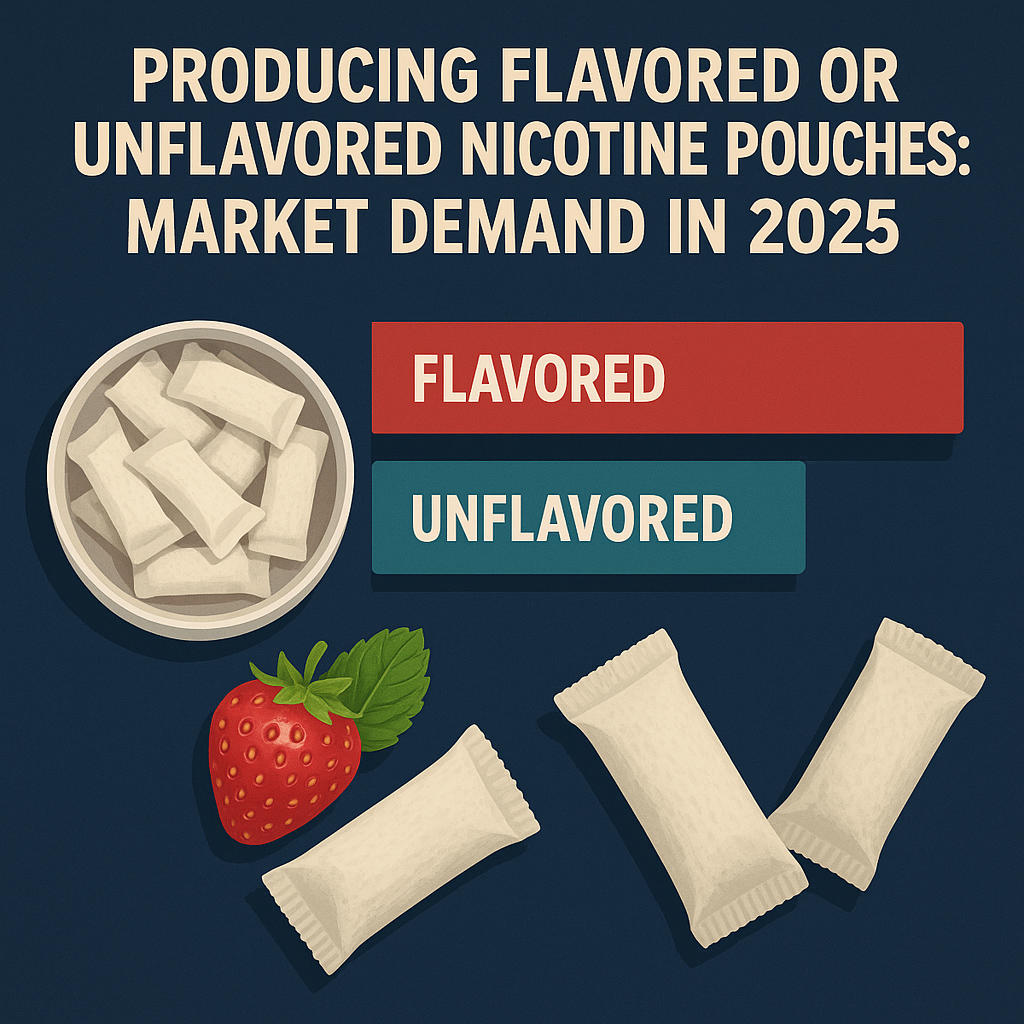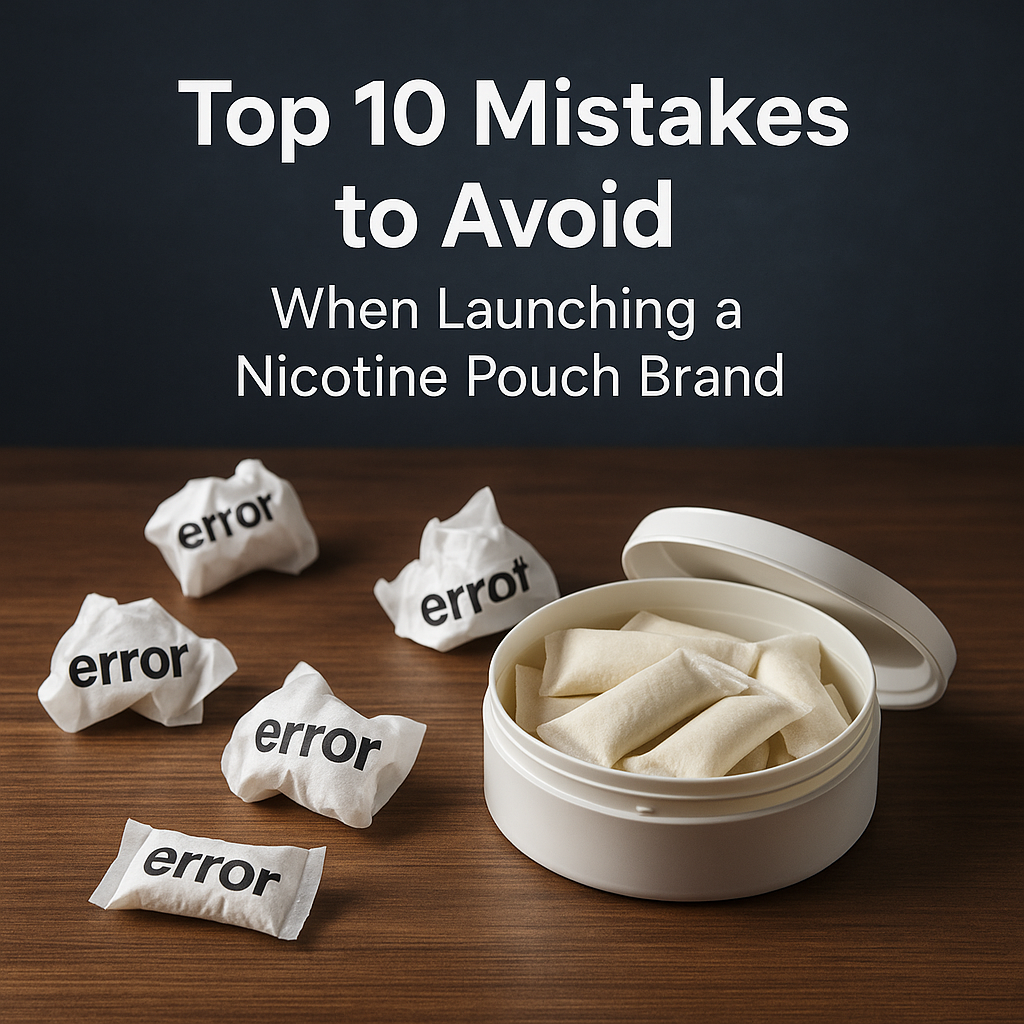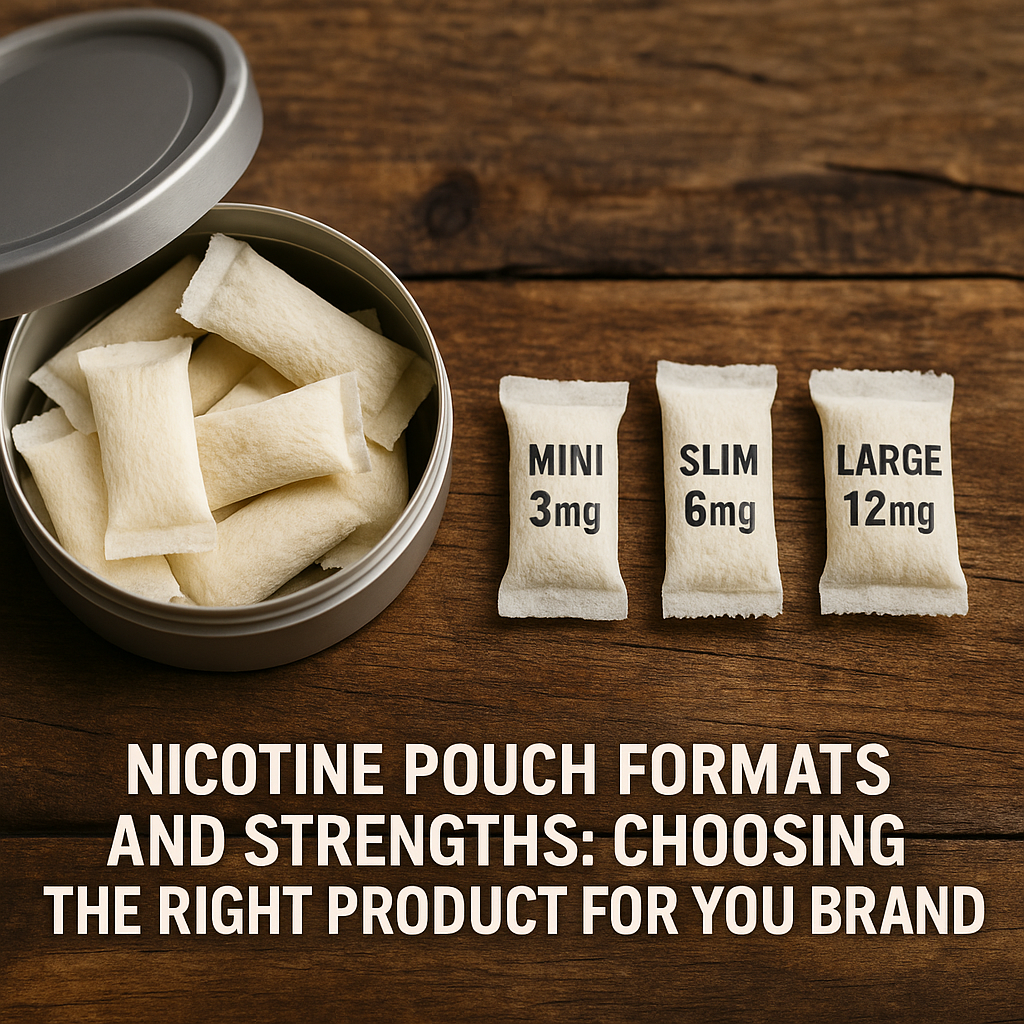
Nicotine pouches are becoming a popular alternative to traditional tobacco products, driven by growing awareness of the health risks associated with smoking and increasing demand for smoke-free options. This has led to significant market growth and transformation.
This overview explores the factors shaping the nicotine pouch market, including consumer preferences, technological advancements, and regulatory landscapes.
Examining market trends, consumer behavior, the competitive landscape, and regulatory changes provides stakeholders with a clear understanding of the market. For consumers, investors, and industry professionals, these insights highlight the factors driving the rapid growth of the nicotine pouch market.
Market Growth and Projections: What Drives the Nicotine Pouch Boom?
The nicotine pouch market is rapidly expanding. In the 2020s, various factors like technological advancements, shifting consumer behaviors, and evolving regulations are fueling this growth.
Growth Projections: A Market Set to Soar
In 2023, the global nicotine pouch market was valued at $3.98 billion. Projections for 2024 suggest a substantial increase to $5.17 billion, a 29.8% year-on-year growth. By 2032, the market could reach $27.4 billion, with a CAGR of 17.5% from 2024 onwards. (Prilla)
Factors Fueling the Growth Engine
Several key drivers are propelling this remarkable growth:
Health Consciousness: Consumers are increasingly prioritizing health and wellness, prompting many to choose nicotine pouches as a potentially less harmful alternative to traditional cigarettes.
Product Innovation: The nicotine pouch industry is continually evolving, offering a wide array of flavors and formats that cater to diverse consumer preferences.
Regulatory Support: Governments worldwide are adopting more nuanced approaches to tobacco control, favoring harm reduction strategies over outright bans. This regulatory shift is creating a more favorable environment for nicotine pouches.
In the following sections, we’ll delve deeper into the factors shaping this dynamic market, exploring regional trends, consumer preferences, key industry players, and the evolving regulatory landscape.
Consumer Preferences and Trends
The rapid growth of the nicotine pouch market calls for a closer look at what consumers want. By aligning products with these desires, manufacturers can ensure they stay ahead of the curve. This section dives into the key factors driving consumer choices: the demand for diverse and unique flavors, the growing preference for unflavored options, and the varying nicotine strengths available to users.
Flavor Diversity Drives Demand
A wide variety of flavors significantly contributes to the popularity of nicotine pouches. Leading preferences include mint variants like spearmint and cool mint, valued for their refreshing taste and cooling effect. Fruit flavors, particularly citrus and berry varieties, are also popular for their vibrant and tangy notes. Additionally, exotic flavors like coffee and cinnamon are emerging trends, appealing to consumers seeking unique sensory experiences.
Unflavored Pouches Gain Ground
Alongside the demand for diverse flavors, there’s a growing shift toward unflavored nicotine pouches, catering to those who prefer a pure nicotine experience. This segment is expected to grow significantly, with an estimated compound annual growth rate (CAGR) of 38.4%, highlighting a strong niche market valuing the unadulterated taste of nicotine.
Strength Preferences
Nicotine pouches cater to a wide range of consumers by offering various strengths. Low strength options (3-6 mg per pouch) are suitable for beginners or those reducing their nicotine intake, while medium strength (6-8 mg per pouch) caters to regular users. High to extra strong options (8+ mg per pouch) are available for those desiring a more intense nicotine experience. This range allows users to choose a product that aligns with their nicotine tolerance and preference, enhancing consumer satisfaction and loyalty. (Nicokick.com)
Consumer Insights for Market Adaptation
To stay competitive, manufacturers must continuously adapt to these evolving preferences. Gathering and analyzing consumer feedback is invaluable.
These consumer preferences reveal a dynamic and evolving market. Understanding them is essential for companies to stay competitive and meet the diverse needs of nicotine pouch users. As we explore regional insights, these trends will help explain how market performance varies across different locations.
Regional Market Dynamics and Consumer Demographics: A Global Snapshot
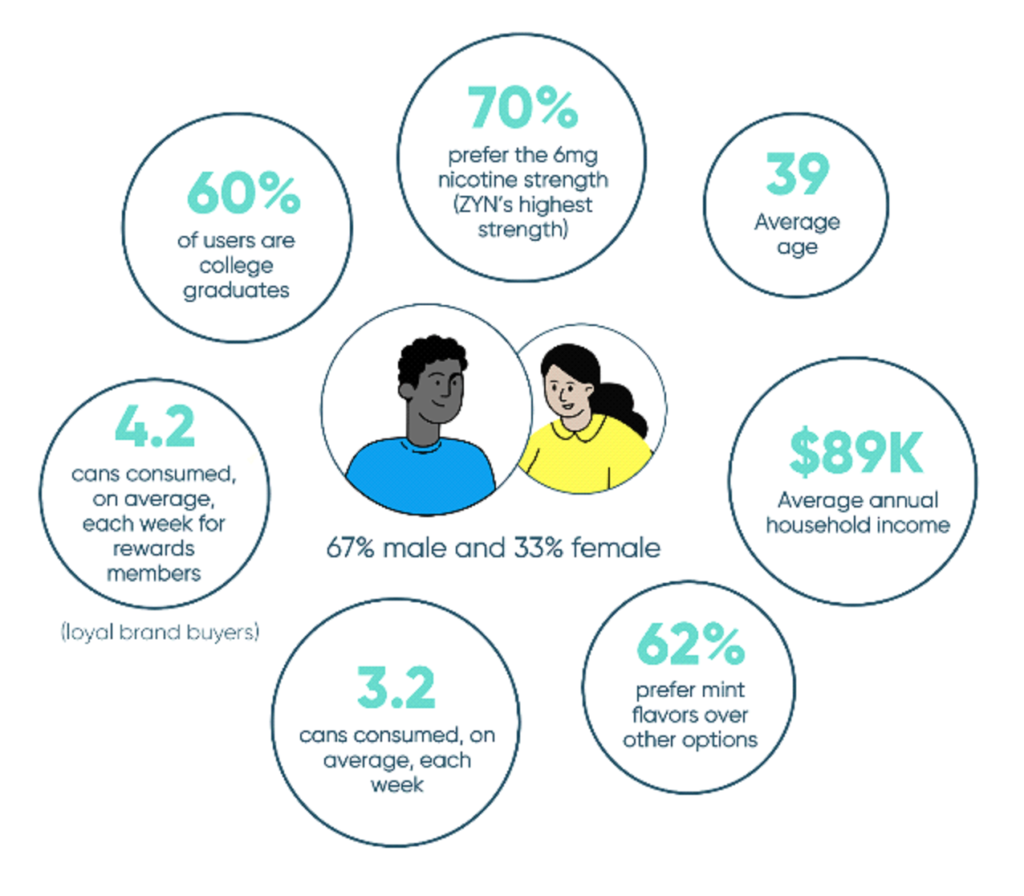
The nicotine pouch market is shaped by cultural preferences, regulatory frameworks, and consumer demographics across regions. Let’s explore these regional nuances and their market impact.
North America: A Flourishing Market with a Distinct Consumer Base
The North American market, particularly in the United States, is experiencing robust growth, fueled by a supportive regulatory environment that promotes harm reduction strategies and a well-established sales and distribution infrastructure.
Strong Growth: Projected to reach 39% market share by 2032.
Consumer Profile: The typical U.S. consumer is a 39-year-old male, college-educated, with an average household income of $89,000.
Consumption Habits: Average consumption is 3.2 cans per week, increasing to 4.2 for loyal brand buyers.
Flavor Preferences: Mint flavors dominate, preferred by 62% of users.
Strength Preferences: 6mg nicotine strength is most popular (70% preference).
(Source: Prilla, Polaris Market Research)
Europe: Leading the Way with Stringent Regulations
Europe maintains its position as the global leader in the nicotine pouch market, commanding more than 50% of the market share. This dominance stems from the region’s stringent regulations promoting smoke-free alternatives and the cultural acceptance of smokeless products, particularly in Scandinavia.
Dominant Market Share: Over 50% of the global market.
Regulatory Landscape: Stringent regulations favoring smoke-free alternatives.
Cultural Influence: Strong acceptance of smokeless products in some regions.
Asia Pacific: A Market on the Rise
The Asia Pacific region is the fastest-growing market for nicotine pouches, driven by increasing urbanization, rising disposable incomes, and a large, young demographic. Countries like China and India are witnessing a surge in demand, driven by less stringent regulations compared to Europe and North America.
Fastest Growing Market: Driven by urbanization and rising incomes.
Key Markets: Significant growth in China and India.
Regulatory Environment: Less stringent regulations compared to Europe and North America.
Cultural Influences and Market Diversity
Cultural norms and historical tobacco consumption patterns significantly influence market dynamics in each region. The popularity of snus in Scandinavia, for example, has paved the way for nicotine pouch adoption. In contrast, regions with strong anti-tobacco sentiments may experience faster adoption rates due to public health campaigns and government support.
Impact on Industry and Newcomers:
The diverse landscape of the nicotine pouch market presents both opportunities and challenges. Established companies must adapt their strategies to cater to varying regional preferences and regulations, while newcomers can leverage these insights to identify untapped markets and tailor their products accordingly. For both, understanding the unique dynamics of each region is crucial for success.
Key Market Players and the Competitive Landscape: The Powerhouses Driving the Nicotine Pouch Market
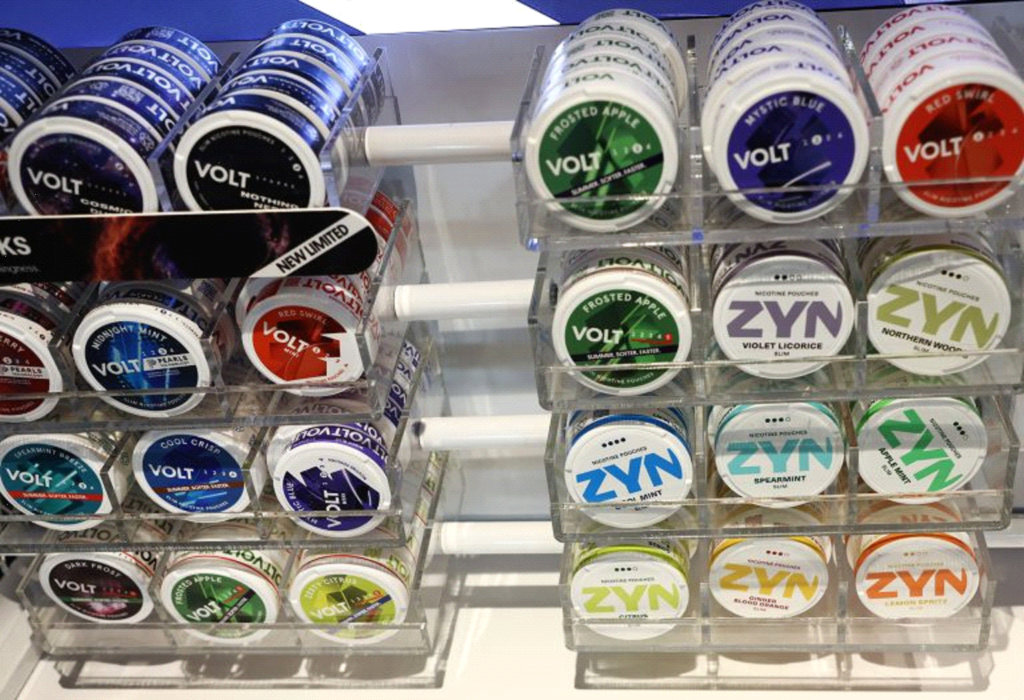
The nicotine pouch market is a dynamic arena, fueled by fierce competition among major players who are shaping the industry’s future through innovation, strategic expansion, and a focus on customer engagement.
Industry Titans: A Battle for Supremacy
Several dominant forces are leading the charge in the nicotine pouch market:
Swedish Match (ZYN): The undisputed market leader, Swedish Match has solidified its position with its popular ZYN brand. A wide array of flavors, consistent quality, and strong brand recognition contribute to their success.
British American Tobacco (Velo): With its Velo brand (formerly Lyft), BAT is a major contender, offering a diverse range of flavors and nicotine strengths. Aggressive marketing and global distribution capabilities further strengthen its presence.
Japan Tobacco International (Nordic Spirit): JTI’s Nordic Spirit has gained popularity, particularly in Europe, through its focus on traditional and innovative flavors tailored to regional preferences.
Market Share and Strategies for Success
While exact market share figures are confidential, these companies are undoubtedly the top players driving the nicotine pouch market forward. Their strategies for success include:
Product Innovation: Continuously expanding product lines with new flavors and nicotine strengths to cater to diverse consumer preferences.
Strategic Expansion: Venturing into new markets and adapting marketing strategies to local tastes and regulations.
Customer Engagement: Utilizing digital marketing to connect directly with consumers, build brand loyalty, and personalize the user experience.
Sustainability and Corporate Responsibility: Increasingly focusing on sustainable practices and ethical sourcing to appeal to environmentally conscious consumers.
The Competitive Edge
The nicotine pouch market is characterized by fierce competition, where innovation and adaptability are key to success. Companies that can successfully navigate the evolving regulatory landscape, understand and cater to consumer preferences, and develop innovative products will ultimately emerge as leaders in this rapidly growing industry.
(Sources: Global Market Insights Inc. Dataintelo Cognitive Market Research)
The future of the nicotine pouch market is undoubtedly bright, with these key players poised to drive further growth and innovation. As consumer demand continues to rise and regulations evolve, the competitive landscape will remain dynamic, making it an exciting space to watch.
Sustainability and Ethical Practices: A New Era of Responsibility in the Nicotine Pouch Industry
As the nicotine pouch market continues to grow, sustainability and ethical manufacturing practices are taking center stage. Consumers are increasingly aware of the environmental impact of their choices, prompting companies to adopt greener initiatives and demonstrate a commitment to ethical production.
ZYN Nicotine Pouches is also making strides in sustainability, focusing on eco-friendly product enhancements and optimized manufacturing processes to reduce waste and emissions. Their efforts reflect a growing consumer demand for products that are less harmful to the planet.
Industry-Wide Sustainability Trends
The nicotine pouch industry is witnessing a broader shift towards sustainability, with companies adopting various strategies:
Plant-Based Materials: The use of organic and plant-based materials is gaining traction, reducing reliance on synthetic substances.
Energy Efficiency: A growing emphasis on energy-efficient production processes aligns with global environmental goals.
Responsible Packaging: Companies are exploring recyclable and biodegradable packaging solutions to minimize waste.
Beyond Environmental Concerns
Ethical manufacturing practices extend beyond environmental concerns, encompassing fair labor practices and responsible sourcing. Companies are becoming more transparent about their supply chains, ensuring ethical sourcing of materials and adherence to high labor standards in production facilities. This transparency fosters consumer trust and loyalty, as buyers are more likely to support companies that demonstrate ethical behavior.
Navigating the Regulatory Landscape: Challenges and Future Outlook
The nicotine pouch industry operates in a complex and ever-changing regulatory environment that varies significantly across regions. Manufacturers and stakeholders must navigate these regulations effectively to ensure compliance and anticipate future changes.
Regional Regulatory Frameworks
United States: The U.S. Food and Drug Administration (FDA) tightly regulates nicotine pouches, requiring compliance with restrictions on marketing to minors, limitations on free samples, and mandatory health warnings on packaging. Recent legislation has also brought synthetic nicotine products under FDA purview, further tightening regulations. (Source: CABLJ Pouchforum)
Europe: Regulations are evolving, with countries like Hungary and Finland leading the way. New regulations in Hungary will impose health warnings, usage instructions, and nicotine content limits, while Finland is working towards integrating nicotine pouches into its tobacco legislation. (Source: Tobacco Control)
Asia and Other Regions: Regulations vary widely from stringent controls in countries like Australia, where nicotine pouches are treated as pharmaceuticals, to regions still developing comprehensive frameworks. This patchwork of regulations poses a challenge for companies seeking to expand their market presence.
Compliance and Industry Challenges
Navigating these diverse regulatory environments involves significant compliance costs and operational adjustments for manufacturers. Key challenges include:
Varying Regulations: Different countries have unique requirements for labeling, advertising, and product composition, making it difficult to maintain standardized products across markets.
Youth Access: Preventing underage access to nicotine products is a universal priority, leading to strict marketing restrictions and age verification requirements.
Health and Safety Standards: Ensuring product compliance with health and safety standards is critical, often necessitating rigorous testing and reporting.
Future Regulatory Landscape
The regulatory landscape is constantly evolving, and anticipated changes could further impact the industry:
Europe: The European Union is exploring more unified regulations across member states, potentially including standardized nicotine content limits and labeling requirements.
United States: Continued scrutiny from legislators could lead to stricter marketing restrictions and accessibility limitations, particularly concerning youth prevention.
Adapting to the Evolving Landscape
Staying abreast of regulatory changes and adapting swiftly is crucial for manufacturers to maintain compliance and secure their market positions. Navigating this complex landscape is essential for both established companies and new entrants seeking to thrive in the dynamic nicotine pouch market.
The Future of Nicotine Pouches: A Market Ripe with Potential
The nicotine pouch market is a dynamic and rapidly evolving landscape, shaped by a complex interplay of consumer preferences, technological advancements, regional dynamics, competitive forces, and evolving regulations. The industry’s remarkable growth trajectory, fueled by a growing demand for smoke-free alternatives and innovative product offerings, underscores its immense potential.
While challenges like stringent regulations and diverse consumer preferences exist, the opportunities for growth are undeniable. The market’s global reach, coupled with increasing awareness of the health risks associated with traditional tobacco products, is driving a shift towards less harmful alternatives like nicotine pouches.
Companies that can effectively navigate the regulatory landscape, adapt to regional nuances, and prioritize sustainable and ethical practices are well-positioned to capitalize on this growing market. The future of nicotine pouches is bright, with continued innovation and expansion expected to drive the industry forward in the coming years.




